Photos by TIANNE STROMBECK
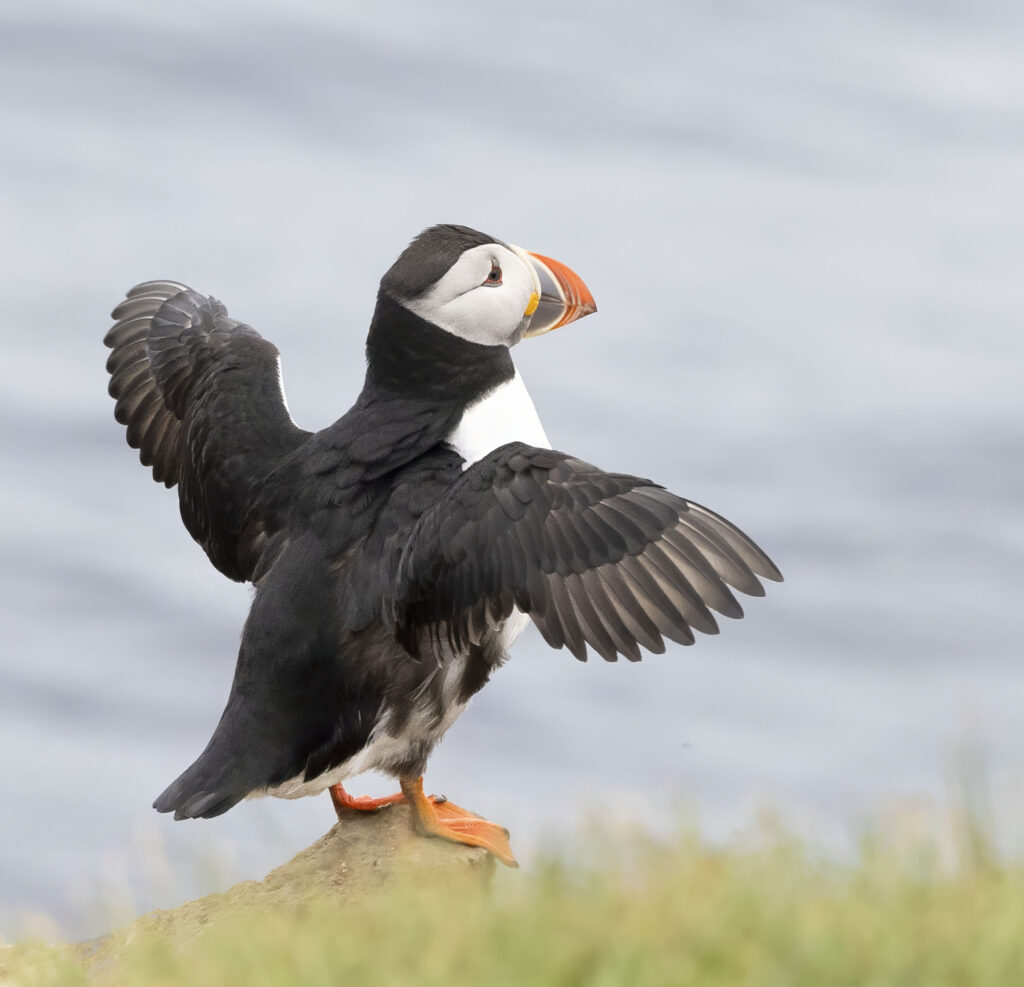
Watch the author read from this piece at our Issue 28 launch party:
On July 4, 1981, something caught Evie Weinstein’s eye as she was washing dishes in a tidal pool on Eastern Egg Rock, a treeless island off the Maine coast. An Atlantic puffin, a football-sized seabird, emerged from the pea-soup fog with something dangling from its beak. Evie dropped the dishpan, grabbed the binoculars slung around her neck, and saw that the puffin had a beak-load of fingerling fish. She had been waiting for this moment and knew at once what it meant: the bird was bringing food for a chick—a puffling, as they are called in children’s books—the first to hatch on the island in a century, and the first seabird hatched anywhere as the result of a conscious human effort to restore them to a place from which they had been exterminated.
Later the same day, peering from a bird blind on the other end of the island, Steve Kress saw a puffin with fish too. It landed, disappeared into a burrow, and emerged a moment later without the fish: conclusive proof that it was feeding a chick. A yellow plastic band on its left leg bore an ID number that lifted the bird from anonymity. Puffin Y47 (yellow 47) had fledged on Eastern Egg Rock four years earlier, after being translocated as a newly hatched chick from a puffin colony in Newfoundland. In the press, Y47 has been dubbed “the Comeback Kid.”
The Kid’s life began ordinarily enough, as puffin lives go. It spent its first week in a burrow in the peaty soil of Newfoundland’s Great Island, swallowing the gulp-sized fish delivered by its parents and hearing from beyond the burrow the muffled din of thousands of squawking seabirds. Then, early one morning, something strange happened. A human hand reached into the burrow and lifted the downy chick into the daylight. A man carefully measured its wingspan to ascertain the Kid’s age: eight to fourteen days, old enough to self-regulate its body temperature but young enough to imprint on a new home. Satisfied, he slipped the Kid into a carrying case fashioned from juice cans with the ends cut off, strapped together with electrical tape, and fitted into a plywood frame with burlap flaps on the sides to let in air.
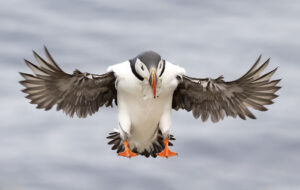
When one hundred chicks had been collected, they were carried to a waiting fishing boat, draped under a tarp to protect them from the wind and sea spray, and ferried to the mainland, where they were driven by car to a nearby airstrip. Then they were flown on a private plane to Bangor, Maine, to be swabbed by USDA inspectors for Newcastle disease, a nasty virus that can be transmitted from wild birds to poultry, and cleared for entry into the United States. At a stroke they became the largest population of Atlantic puffins in the nation. They were taken to the coastal village of Bremen and finally ferried to their new home, Eastern Egg Rock. There the Kid was gently transferred to its very own “puffin condo,” built from chunks of sod, and fed with vitamin-fortified smelt. Burrow to burrow, the entire journey took ten hours.
The idea of returning puffins to Eastern Egg Rock came to Kress when he was a twenty-six-year-old instructor at the Audubon Society’s Hog Island summer camp in Bremen, in 1970. Not everyone thought it was a great idea.
In the camp library, Kress had come upon Maine Birds, a compendium published in 1949 by ornithologist Ralph Palmer. Palmer mentioned Eastern and Western Egg Rocks, specks in the ocean a few miles out from Hog Island, saying that “the Puffin bred on these rocks” until late in the nineteenth century. “Those six words,” Kress recalls, “changed my life.”
Maine’s Atlantic puffins, like many North American birds, had been killed off by hunters in the nineteenth century. Today puffins are regarded as clownlike and adorable, but at the time they were more likely to be seen as food. Their habit of clustering in groups on land and water, which offered some protection from their usual predators, made them easy targets for men armed with punt guns—shotgun-style cannons—who shot whole rafts of birds with a single blast. Their meat, which tastes like fishy chicken and is considered a delicacy in Iceland, was a welcome addition to local dinner tables. Fishermen chopped up the birds for bait, too. If people were responsible for the disappearance of the puffins a century ago, Kress wondered, could people now bring them back? To do so would be an act of moral restitution as well as ecological restoration.
A plan took shape in his mind. Teaching that fall at Antioch College in Ohio, he wrote to the Audubon Society for funding and to seabird experts for advice. One letter was to Ralph Palmer, whose book had inspired the idea. Palmer was an eminent scientist, a recipient of the American Ornithological Union’s Brewster Medal for outstanding work on birds of the Western Hemisphere. He was also a man who “did not suffer fools gladly,” as his obituary in the AOU journal The Auk would put it. Palmer’s response came as a shock and disappointment. He dismissed the notion of bringing the puffins back to Maine as “a stunt and a waste of time,” and advised Kress that “anyone who wanted to see puffins should go to Iceland,” where there were still plenty to be found.
Other ornithologists shared Palmer’s skepticism. They questioned whether the project could succeed; after all, nothing like it had been attempted before. They worried that it would divert scarce resources from efforts to save species whose survival was really in peril. Kress argued that the conservation funding pie was not fixed, that his project could help to grow it, and that the fact that puffins were not an endangered species was a plus, since if the experiment failed it would not significantly dent their numbers.
A deeper problem was that Kress’s idea was anathema to the nearly universal ethos among environmentalists at the time. People were seen as the problem, not as the solution. Conservation was all about limiting the negative impacts from human actions, not intervening in nature to change it for the better. If puffins came back to Maine of their own accord, that would be well and good. But a return that depended on helping human hands would be, well, unnatural.
Kress was undeterred. To prepare Eastern Egg Rock for puffins, his first challenge was to drive off the great black-backed gulls and herring gulls that now inhabited the island and would happily add puffins to their diets. Venturing into the dark side of wildlife management—killing some animals to protect others—he enlisted the U.S. Fish and Wildlife Service to crush gull eggs and poison adults. In 1973, he persuaded David Nettleship, a seabird expert at the Canadian Wildlife Service who initially had been among the skeptics, to let him bring six chicks from Newfoundland for a trial run. Intel co-founder Bob Noyce, who had a summer house in Bremen, offered to fly the pufflings in his personal plane. The experiment demonstrated that it was possible to transport the chicks safely to Maine and successfully hand-rear them to fledging age. The next summer, Kress translocated sixty more chicks and recruited a small team of interns—the “puffineers”—to camp for the summer on Eastern Egg Rock to feed and protect the nestlings.
Project Puffin was underway. Fifty years later, the stakes turn out to be bigger than the fate of a single species on a single island.
Puffins spend most of their lives at sea. They return to dry land only in the summer breeding season, drawn by an inner urge back to their own birthplace. This attachment, a trait known as philopatry, was key to Kress’s plan. He hoped that the pufflings that fledged on Eastern Egg Rock would return to breed in three or four years, when they came of age, and then their offspring would do the same, at which point the puffineers’ job would be done. They still had a lot to learn.
Tucked into its condo, the Comeback Kid was fed small fish three times a day. Between feedings, a chicken-wire screen kept it from poking out where a passing gull might snatch it. A metal band with a nine-digit bird-banding code of the U.S. Geological Service was attached to its right leg; Project Puffin’s own plastic band, color-coded yellow for its birth year of 1977, was put on its left.
As the Kid neared fledging age, its downy coat giving way to proper feathers, the puffineers removed the screen at night so that the puffling could venture out for the nocturnal explorations that could imprint its indelible bond to the island. On the night of August 20, the Kid fledged. It waddled to a boulder on the water’s edge and leapt off, wings beating at the puffin’s frantic pace of up to four hundred beats per minute, and landed in the water not far offshore. Moments later the Kid dove in search of fish, its dual-purpose wings now serving as underwater paddles.
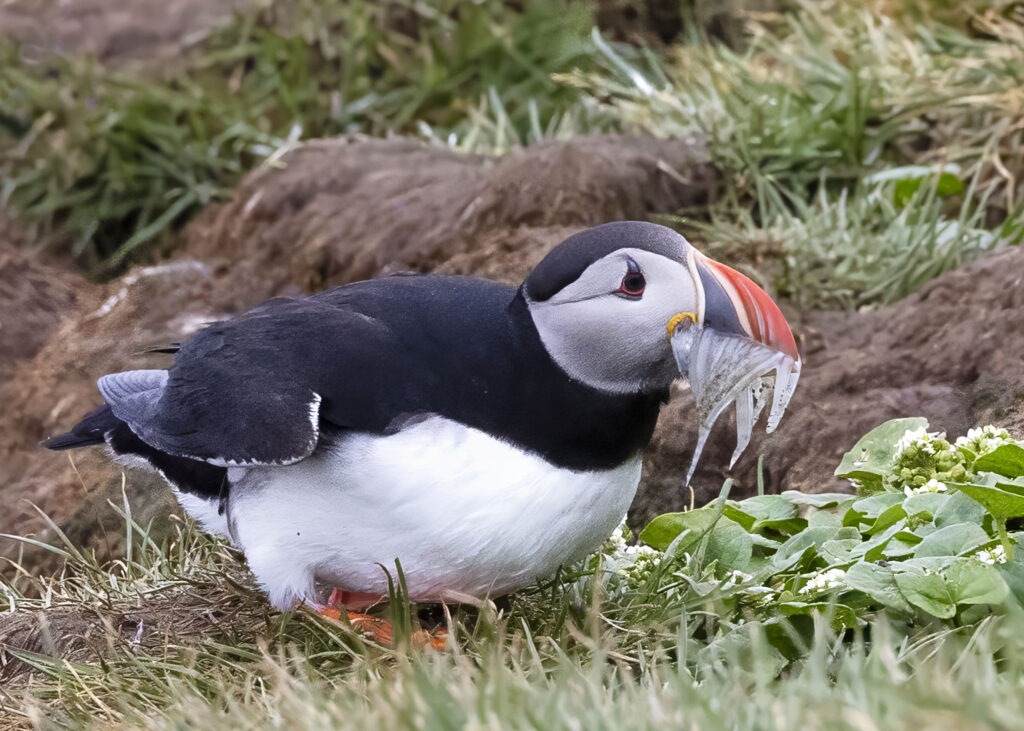
In the cover of darkness, the Kid headed out to open water. At the time, little was known about where puffins spend their lives at sea. In recent years this has changed, thanks to tiny geolocator tags that can be attached to a bird’s leg band. These have revealed that Maine’s puffins often wind up in a five-thousand-square-mile area on the edge of rich fishing grounds off George’s Bank, called the Northeast Canyons and Seamounts because of the rugged topography of the ocean floor. In 2016 President Obama designated this tract as a national marine monument to safeguard its biodiversity, including endangered species of whales.
The Kid did not set foot on land again for three years. It fished in the North Atlantic, endured fierce winter storms, and each spring survived a flightless month at sea when it molted its old feathers and grew new ones.
Meanwhile, Kress and the puffineers brought more chicks from Newfoundland every summer and awaited the reappearance of earlier cohorts at Eastern Egg Rock. As years passed without a sighting, the donors began to get restless. “So, Steve,” they asked, “where are those puffins?” Part of the problem, he realized, might be that puffins nest in colonies: they expect to be surrounded by other puffins in the breeding season. This posed the catch-22 dilemma of how to lure them to the island before other puffins were already present.
Trying to “think like a puffin,” Kress hit on the idea of placing carved puffin decoys on the island. It worked, sort of. Puffins, each with a telltale colored plastic leg band, alighted and pecked at the decoys, but none of them stayed. Kress then recalled how his childhood pet parakeet had a mirror in its cage. The puffineers set up mirror boxes so that visiting puffins could see their reflections, in the hope that a more interactive experience would induce them to stick around long enough to attract other puffins.
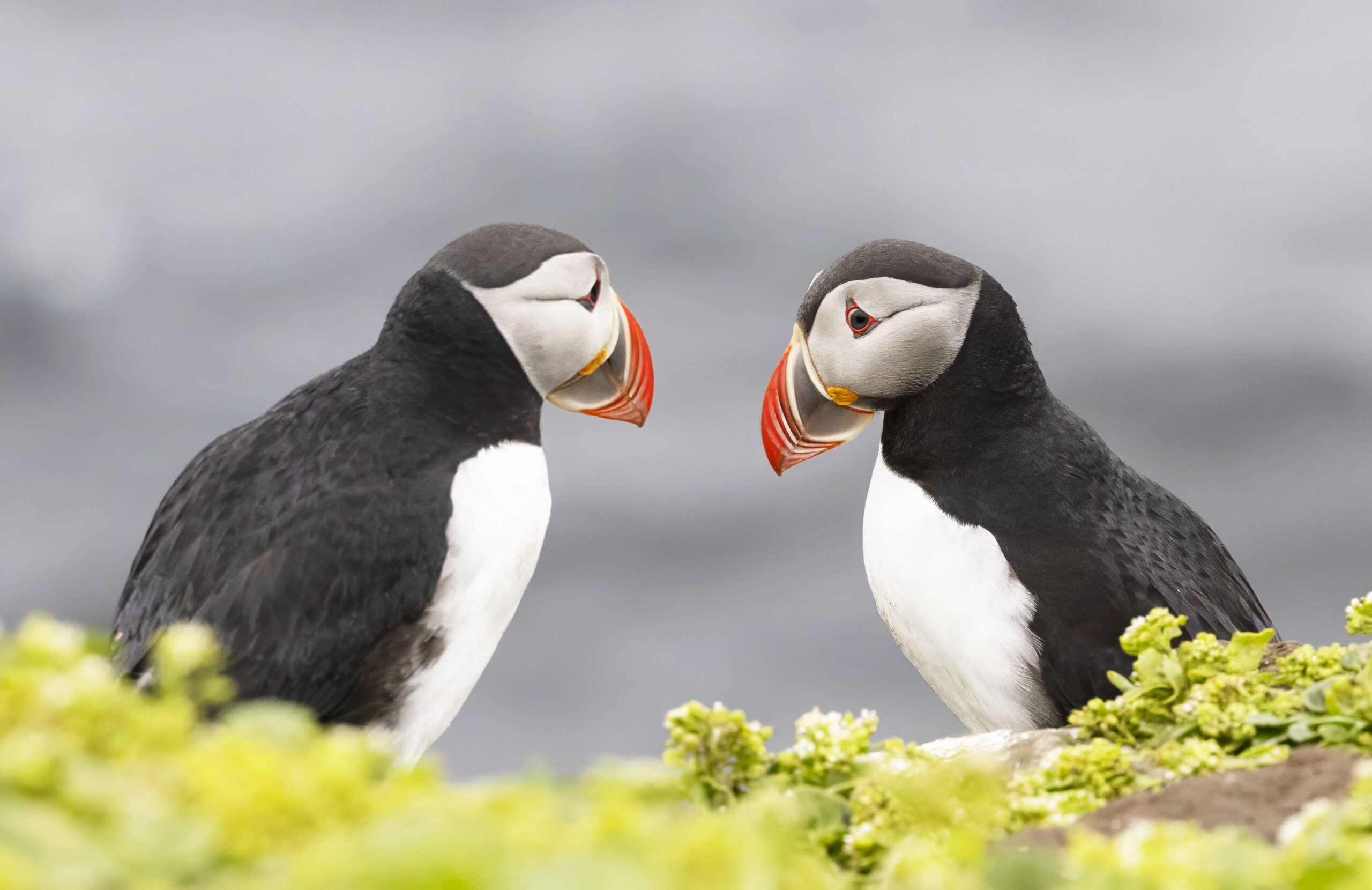
Gulls continued to pose a problem, despite ongoing efforts to control their numbers by smashing their eggs, shooting them, and hanging some of the corpses as a warning to others. “If you came to an island and saw dead people strung up,” an intern explained, “you’d leave pretty quick, too.” But still the gulls kept coming, evidently being less squeamish than humans. When I visited Eastern Egg Rock in 2019, I noticed a herring gull perched a few feet away from a dead one splayed on a stake.
Gulls had been rare in coastal Maine when puffins lived there in the nineteenth century. Residents harvested gull eggs as food, and toward the end of the century, gulls and other birds were decimated by plume hunters in response to the craze for feathers on ladies’ hats. Times changed for the better—at least from a seagull’s perspective—in the twentieth century. Hunting was banned, and burgeoning landfills, together with bycatch tossed overboard by fishing vessels, provided ample year-round food supplies. The good news for gulls was bad news for puffins.
To make the island safe for puffins, Kress enlisted another species: terns, smaller cousins of the gulls. They, too, had been hit hard by the plume hunters. Like puffins, terns are preyed upon by gulls, but unlike puffins, they mount an aggressive defense; they nest on the ground, so they have to protect their eggs and young from predators. They chase after gulls and stab at them with sharp beaks. (Humans get the same treatment. On Eastern Egg Rock, Kress showed me how to fend them off by waving a plant stalk over my head, a technique that proved less effective against the terns’ other weapon, swooping and pooping on intruders with uncanny precision.)
Kress reasoned that if he could induce terns to resume nesting on Eastern Egg Rock, they would act as a “protective umbrella” for the puffins, a kind of an air defense system. In 1978, the puffineers set out tern decoys and started playing tern recordings on loudspeakers powered by a car battery. Two years later, terns nested on the island for the first time since the 1930s. The stage was set for the Comeback Kid to come back.
The labors of Kress and his team would have baffled nineteenth-century Mainers, not because they were averse to rough living and hard work—far from it—but because the point of the exercise would have been a mystery. The conventional wisdom at the time, so ingrained that most people never gave it a second thought, was that nature’s bounty was a God-given blessing for humans to exploit and would forever remain so. If, over the years, a certain species grew scarce or disappeared entirely, the loss was no more noteworthy than the other dizzying changes, technological and social, happening at the time. It was a matter-of-fact, laissez faire attitude to nature. Anything went, and if something wound up gone altogether, it was no big deal.
Like most seabirds, puffins showed “little or no inborn fear of man,” the Welsh naturalist Ronald Lockley noted in his 1953 monograph Puffins, the first book devoted entirely to them. For millennia they had lived on the open sea and nested on uninhabited islands, and when humans showed up, the birds were easy prey. John James Audubon recorded shooting lots of them on an island off the coast of Labrador in 1833: “The poor things seemed not at all aware of the effect of guns, for they fly straight towards us as often as in any other direction.” The slaughter of seabirds on the Atlantic seaboard amounted, in his words, to a “war of extermination.”
Seabirds were a source of eggs as well as meat, as Eastern Egg Rock’s name attests. After World War II, Dr. Hugh Cott of Cambridge University devised a palatability scale to compare the eggs of more than two hundred different bird species. The eggs were served scrambled to a three-man tasting panel. On a ten-point scale, Atlantic puffins scored a respectable 6.6—not as high as chickens, which topped the chart at 8.7, but well above, say, house wrens at a measly 3.2. Gull eggs were even tastier than puffin eggs, however, as well as being easier to collect, so, on balance, egging on the islands may have been beneficial to puffins. Hunting was another matter.
On Denmark’s Faroe Islands, where puffins have been hunted for centuries, local rules limit the harvest to sustainable levels by dictating when, where, and by whom the birds can be taken. The islanders use a fleyge, an implement resembling an oversized lacrosse stick, to snare the puffins; puffins carrying fish in their beaks are strictly off limits, since this means they are feeding a nestling. Similar traditions safeguarded puffin numbers in Iceland’s Westman Islands.
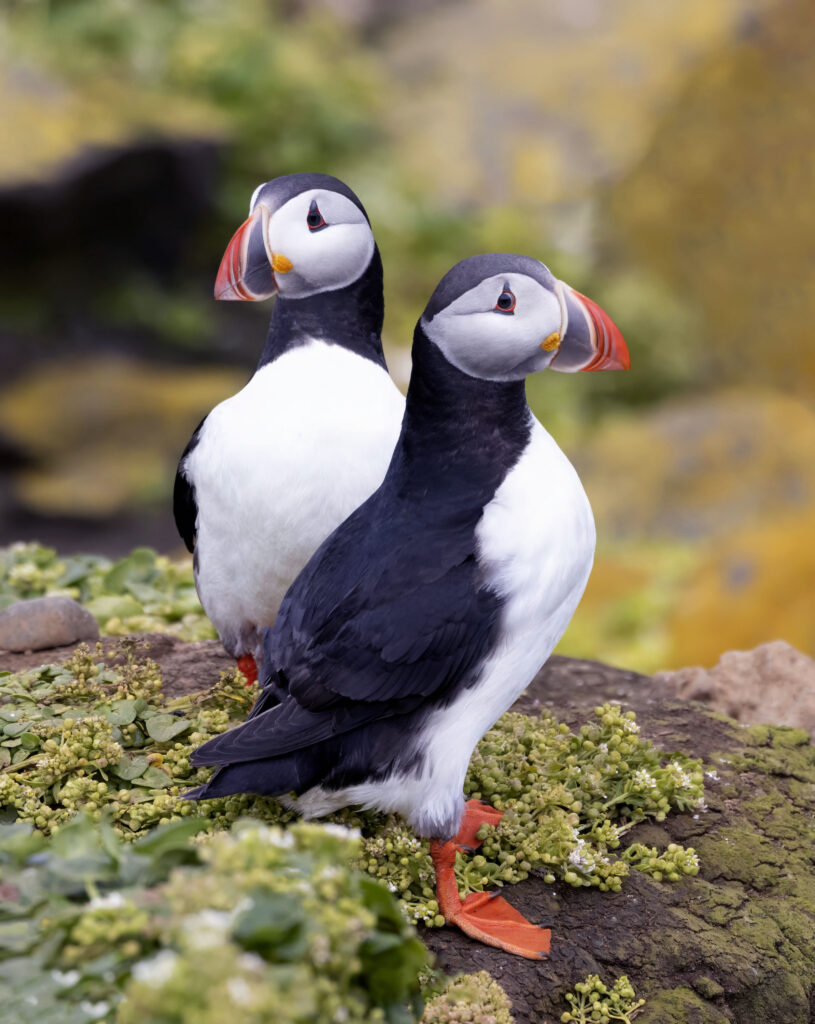
No such restraint was practiced in Maine. Fishermen spread nets over puffin burrows at night to capture them as they emerged in the morning, an especially deadly technique as the nestlings were left to starve underground. The netters caught many birds for little effort, an efficiency that turned out to be ephemeral, since the game was lost in the very process of winning it.
The entry for the Atlantic puffin in Life Histories of North American Birds, published in 1919 by the National Museum (forerunner of the Smithsonian), reads like an epitaph for the species: “Besides being grotesque it is singularly confiding or stupid,” wrote ornithologist Charles Wendell Townsend, “and it is this, it seems to me, that is leading rapidly but surely to its downfall and final extinction.”
Because puffins can fly, they were not as utterly defenseless as their North Atlantic cousin, the great auk. Flightless birds standing as tall as a man’s waist, the auks resembled the penguins of the Southern Hemisphere, a classic example of convergent evolution. Agile in the water but ungainly on land, the auks provided seafarers with a plentiful source of meat, fresh and salted, so “great and apparently inexhaustible,” wrote the noted ornithologist Edward Howe Forbush, that it was “used as bait to lure colonists to Newfoundland.” Industrial-scale harvesting of auk feathers for use in bedding decimated the species in the 1700s. On Funk Island, fifty miles off the coast of Newfoundland, their largest breeding site, crews of men herded the birds into stone enclosures and clubbed them to death. The corpses were boiled in kettles to loosen their feathers, and, after plucking, the fatty remains were thrown into the fires as fuel. The last two great auks ever recorded were killed in 1844 on Eldey, an island off the coast of Iceland; their internal organs were pickled and sent to the University of Copenhagen’s zoology museum.
To humans, the middle of the ocean appears to be a trackless expanse. But to puffins and other seabirds, it is “a navigable landscape of currents, upwellings, smells, wind, sun, stars and the Earth’s magnetic field,” explains Euan Dunn, principal marine advisor to Britain’s Royal Society for the Protection of Birds. How the birds read these directional cues remains unclear, but they navigate the open seas with astonishing accuracy. From the puffin’s perspective, we are the stupid ones.
Early spring in 1981, somewhere in the frigid North Atlantic, an ancient urge stirred in the Comeback Kid. The bird had made an exploratory visit to Eastern Egg Rock the year before, where, reassured by the presence of the decoys and the scarcity of gulls, it ventured onto solid land and prospected among the boulders for a crevice that would make a good burrow. Now that it was four years old, its first time to breed had come. Carotenoid pigments from the fish it ate had turned its bill a vivid orange, a signal of reproductive vigor. In the waters off the island the Kid found a mate, another puffin that had been transplanted from Newfoundland as a chick. They rubbed their bills together, a courtship ritual that never fails to enchant those humans lucky enough to witness it.
That year, five pairs of puffins bred on Eastern Egg Rock. For Kress and his fellow puffineers, it was the culmination of eight years of dedicated work. They had shown that, with the right mix of pluck and ingenuity, it is possible to bring lost seabird colonies back into existence. The success converted some of the initial skeptics into fans of the project. Kress wrote to Ralph Palmer to share the news, still hoping for his approval, but the older man was unmoved. He replied that real conservation means leaving nature alone, not “tinkering” with it. When he and Kress met at a Hog Island event a few years later, Palmer said that he looked forward to eating stewed puffin.
When Kress began, he had envisioned his project as a one-off intervention: once the puffins were back, the plan was to “withdraw all signs of humanity.” But, by the time the Comeback Kid returned, it was clear that humans would need to be there for the long haul to protect the puffins from would-be predators: the gulls, owls, bald eagles, and occasional mink or otter that swam out to the island. Every year since the beginning of Project Puffin, a new team of puffineers has camped out on the island for the breeding season. In 1979, Evie Weinstein’s first year as an intern, they built a wooden shack that they christened the Egg Rock Hilton, where they could cook, sleep, and store gear.
The Audubon Society provided some backing for the project, but most of the funding came from individual donors. Tom French, another of the first interns, who would go on to direct the endangered species program of the Commonwealth of Massachusetts, recalls meeting a wealthy donor who used to anchor her yacht offshore. “She was infatuated with puffins. She set foot on Eastern Egg Rock once or twice, but mostly she just hung out with her crew on the boat. Once, when I was leaving the island, after ten days without a bath and covered in bird poo, Steve told us we were invited to the yacht. I smelled so bad, and it felt like I was walking into the Ritz. But she didn’t care. She just said, ‘You must tell me all about the puffins!’”
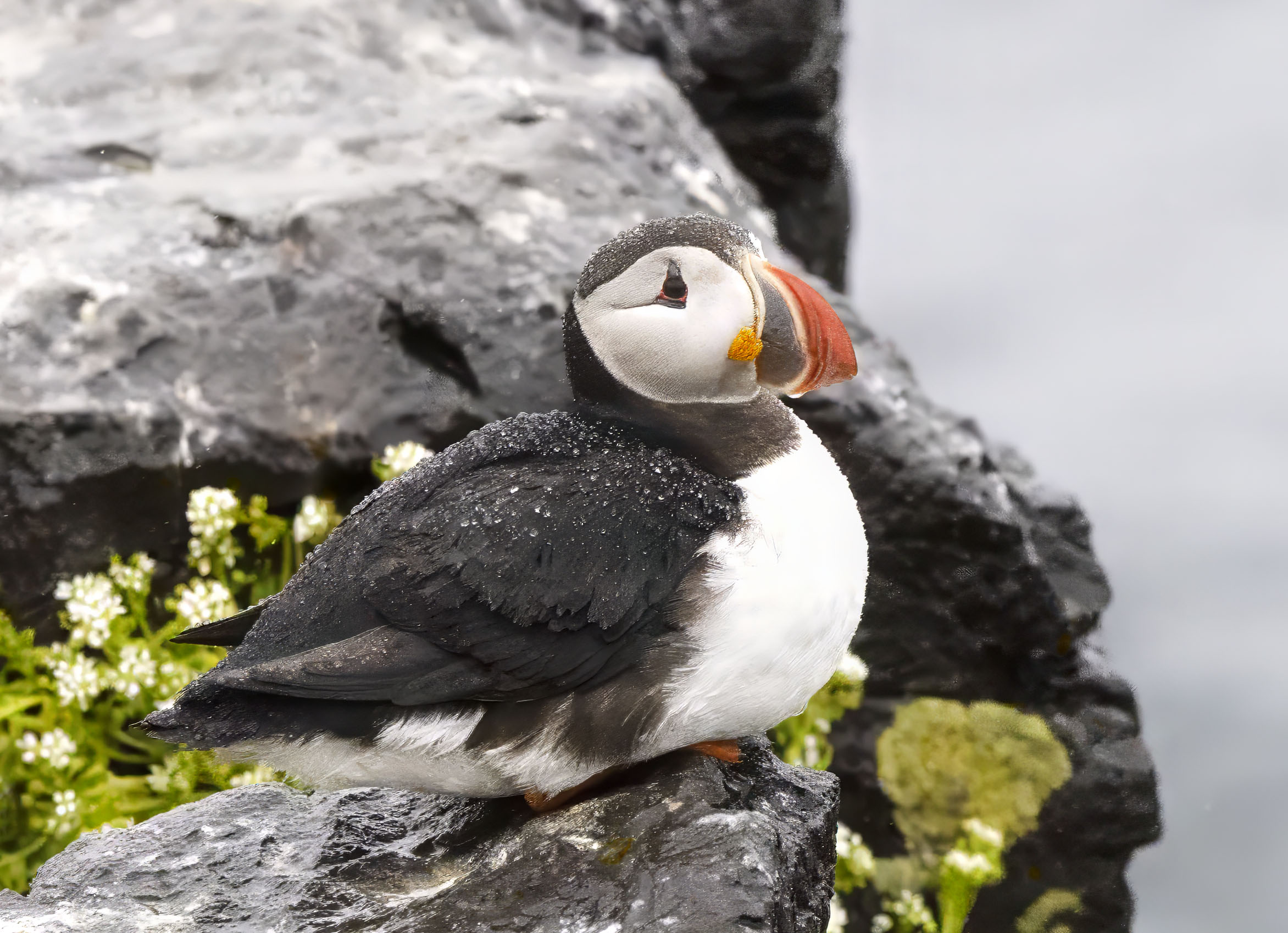
Over the years, Kress has developed several rationales for the project. The initial one was human culpability for the puffins’ demise and our responsibility to right a past wrong. In the nineteenth century, puffins didn’t need protection from predators apart from humans. Gulls were far less common than they are today. Here, too, Kress sees a baleful human influence, describing the gulls as our “recycled garbage.” But today’s increased numbers of bald eagles, great horned owls, and mink are regarded by environmentalists as a conservation success story.
A second rationale is the development of restoration techniques that can be used elsewhere. Seabirds, many of which are endangered today, often act as keystone species that underpin whole ecosystems. Worldwide they consume about as much fish and seafood as do humans, recycling nutrients on land that allow plants, insects, and other species to flourish in harsh environments. Nearly four hundred seabird projects around the world have used techniques pioneered at Eastern Egg Rock. An example is the restoration of the Chinese crested tern, once believed to be extinct, on the Juishan islands in the East China Sea. Now that these techniques are well established, however, it is no longer clear that Eastern Egg Rock is needed as a laboratory.
A third rationale for the project, unanticipated in the beginning, is its role in training new cohorts of conservation biologists. Living all summer in a tent on a windswept island, counting birds and smelling of guano, is not everyone’s idea of a good time, but it can change the lives of the young people who do it. When I asked Weinstein if she’d felt isolated on Eastern Egg Rock, she was taken aback. “People can feel isolated in Manhattan. I never felt isolated on the island, ever. It’s such a rich environment, with so much to see, so much to hear, so much to be thoughtful about. I felt a sense of more connection there than in any other place. It’s the opposite of isolation.” Over the years, more than five hundred interns have worked on Eastern Egg Rock and other Maine islands where Project Puffin fanned out, and many have gone on to careers in wildlife restoration and management.
Another rationale, again not in the original plan, has been the growth of an ecotourism industry that brings millions of dollars into the local economy. More than 150 pairs of puffins now breed on Eastern Egg Rock. Tour boats operating out of Boothbay Harbor and Pemaquid peninsula bring thousands of visitors to circle the island, with an Audubon guide onboard who offers color commentary. The guide duly points out other birds, too—terns, cormorants, guillemots—but it’s obvious what the tourists really came to see. When the first puffin appears, they rush to the railings. Smartphone cameras click. A gift shop in Rockland, the nearest big town, does a brisk business in puffin paraphernalia: T-shirts, caps, mugs, greeting cards, magnets. Tourism boosts not only the local economy but also public awareness. The puffins act, Kress explains, as “ambassadors for the protection of all bird species.” This testifies to perhaps the most compelling feature of the project: as Charles Duncan, founder of the Institute for Field Ornithology at the University of Maine at Machias, puts it, puffins are just “wicked cute.”
The final act in the drama of seabird decimation came at the close of the nineteenth century when the plume craze drove market hunting to a fever pitch. On the streets of Manhattan in 1886, ornithologist Frank Chapman counted 542 women’s hats adorned with the feathers, and sometimes entire wings or bodies, of forty different bird species. The choicest feathers, like the snow-white plumes of egrets, literally were worth more than their weight in gold.
In The Great Transformation, historian Karl Polanyi maintained that capitalist society exhibits a “double movement”: relentless expansion of the market is accompanied by an opposing advance of social protection “aiming at the conservation of man and nature.” One example he could have cited (but didn’t) was the way the plume trade spurred movements for conservation and bird protection. Together with the extinction of the passenger pigeon, once the most numerous birds in North America, and the near extinction of the bison, the mass slaughter of birds for their feathers provoked many Americans to question man’s supposed dominion over nature, a precept dating from biblical times. One result was the passage of the Migratory Bird Treaty Act of 1918, which made it a federal crime to kill any of hundreds of species of birds.
Many rebounded when the hunting pressure was lifted, but not puffins. At Eastern Egg Rock and the handful of other Maine islands where they once nested, the catch-22 trait of philopatry coupled with the ubiquitous presence of gulls prevented their return. Restoration of these species would require more than a halt to human depredations: it would need active intervention above and beyond a cease-and-desist order.
From Project Puffin’s inception, critics accused Kress of trying to “play God.” To many conservationists at the time, the idea of human-assisted restoration was oxymoronic, even outrageous. The old belief that humans can do no wrong had been supplanted by the opposite: that we can do nothing right.
Kress started to question this view when working on a master’s thesis at Ohio State. Surveying shrubland birds on abandoned farms, he compared sites used by an outdoor children’s camp to undisturbed areas and discovered that more birds nested in the “disturbed” habitat. He concluded that the children are to cardinals what alligators are to birds in the swamps of the deep South: they scare away racoons, snakes, and other predators. In the early 1970s, the idea that birds could benefit from a human presence placed him in a decidedly minority position. Project Puffin would put this radical proposition on the line.
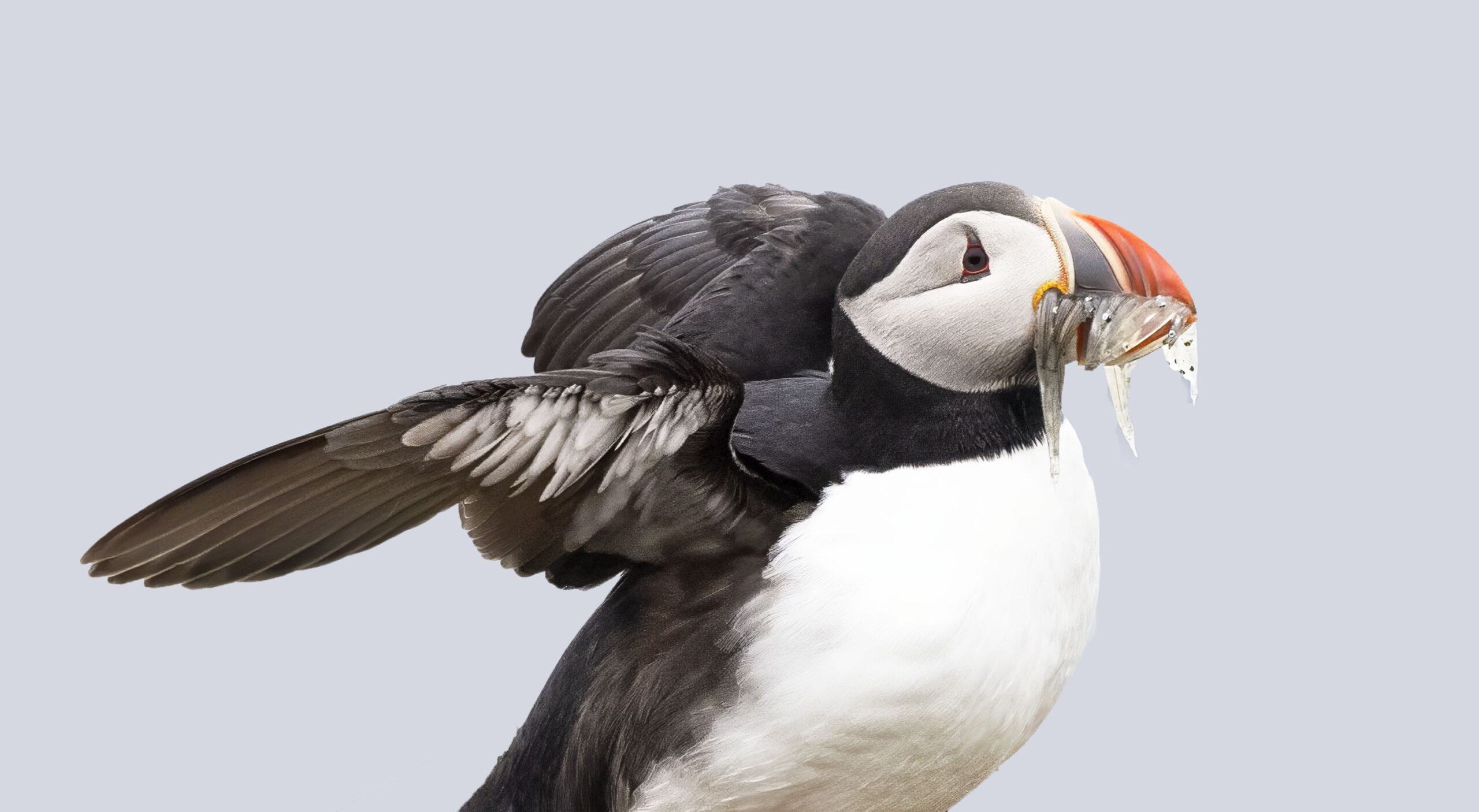
The acrimonious split between proponents of hands-off and hands-on conservation came to a head in the 1980s in the debate over the California condor, a giant vulture that in prehistoric times ranged across much of North America but whose numbers had fallen to only twenty-one birds in the wild and three in zoos. Few would call the condor cute, but its ten-foot wingspan gives it a charisma of its own.
In 1979 the U.S. Fish and Wildlife Service launched a California Condor Recovery Program that envisaged, as a last resort, the capture of all the remaining wild birds for breeding in captivity. The plan provoked an outcry from many environmentalists. At best, the result would be a “manufactured facsimile,” charged David Brower, founder of Friends of the Earth and former director of the Sierra Club, in a book called The Condor Question: Captive or Forever Free?. A condor, he wrote, “is five percent feathers, flesh, blood, and bone. All the rest is place.”
Captive-bred condors, two Cal State LA professors contended, would be nothing more than “feathered pigs.” Rather than making critics feel better about humans, the prospect of raising condors in captivity made them feel worse about the birds.
Behind the outrage was an allergic reaction to the proposition that humans can do anything good for other species apart from leaving them alone. Untrammeled places where “man himself is a visitor who does not remain,” in the language of the 1964 Wilderness Act, is seen as the best of all possible worlds. In keeping with this vision, biologist E. O. Wilson proposed in 2016 that we set aside half the Earth’s lands and seas as protected areas untouched by human activities (with the possible exception of the practices of Indigenous people). In a more recent incarnation, this is the worldview behind the hashtag #WeAreTheVirus, which sees the COVID-19 pandemic as nature’s way of healing itself.
The condor program ran into more than a few snags. Some of the birds died in captivity. The young raised in zoos grew so accustomed to humans that, after release, they perched on houses and raided garbage cans, a problem that necessitated the use of “aversion therapy” before new releases. Once returned to the wild, some condors were poisoned by lead fragments in carcasses left by hunters.
In the end, however, the plan succeeded despite the setbacks. Condors were reintroduced not only to their last refuge in Southern California’s Hopper Mountain National Wildlife Refuge but also to Baja California, where they had last been seen in 1937, and to the Grand Canyon, where they had not nested for ten thousand years. Today the condor population has surpassed five hundred, two-thirds of them living in the wild.
Last year marked Project Puffin’s fiftieth birthday. Human-assisted restoration is no longer quite so controversial, but two big misgivings still haunt it. One is the matter of time. To many, there is a world of difference between solving a problem and intervening with no endgame in sight. These days, when Kress gives public talks about the puffin project, he emphasizes that restoration is not a one-and-done deal. “But,” he tells me a bit ruefully, “no matter how many times I say, ‘We need to stay there to keep the puffins there,’ in the Q&A someone always asks, ‘Yeah, but how long are you going to keep doing this?’ It’s the single most frequent question I get.”
Today, Kress says, Eastern Egg Rock is “an ark that we have filled with seabirds; we are as much responsible for their well-being as Noah was for his biblical passengers.” Along with seabird restoration techniques, the project pioneered something else, something that didn’t have a name until this century: conservation reliance, wherein other creatures depend on human actions for survival. It is “tinkering” without end. And it is increasingly common. Eighty percent of the one thousand species for which recovery plans have been implemented under the Endangered Species Act today require an ongoing human presence.
“There may be some purists who say our goal is to create self-sustaining populations, where they just go about their business and no human intervention is necessary,” says Holly Jones, an ecologist at Northern Illinois University who ten years ago co-authored an inventory of seabird restoration projects around the world with Kress. “Project Puffin has not reached that point. I don’t know that they’ll ever be there. And I think that’s okay. I think that we are stewards of this Earth, we’ve had some really big impacts on this Earth, and if Earth requires us to do some extra heavy lifting, even in perpetuity, that’s kind of our job.”
Conservation-reliant species blur the line between the wild and the domesticated, making what was seen as a sharp demarcation into a continuum. This is less an ecological difficulty than a psychological one for those accustomed to thinking of humans as apart from nature or, worse, as a cancer on the face of the planet. Wild species are revered, whereas domesticated species, or at least the ones we eat, are disdained. “Feathered pigs” is unmistakably an insult, even though pigs are highly intelligent, as anyone who has met one is likely to know. Some of our unease at the thought of wild animals being reliant on us may stem from the fact that blurring the line between wild and domesticated species makes it harder to countenance the routine, industrial-scale abuse of animals at the other end of the spectrum.
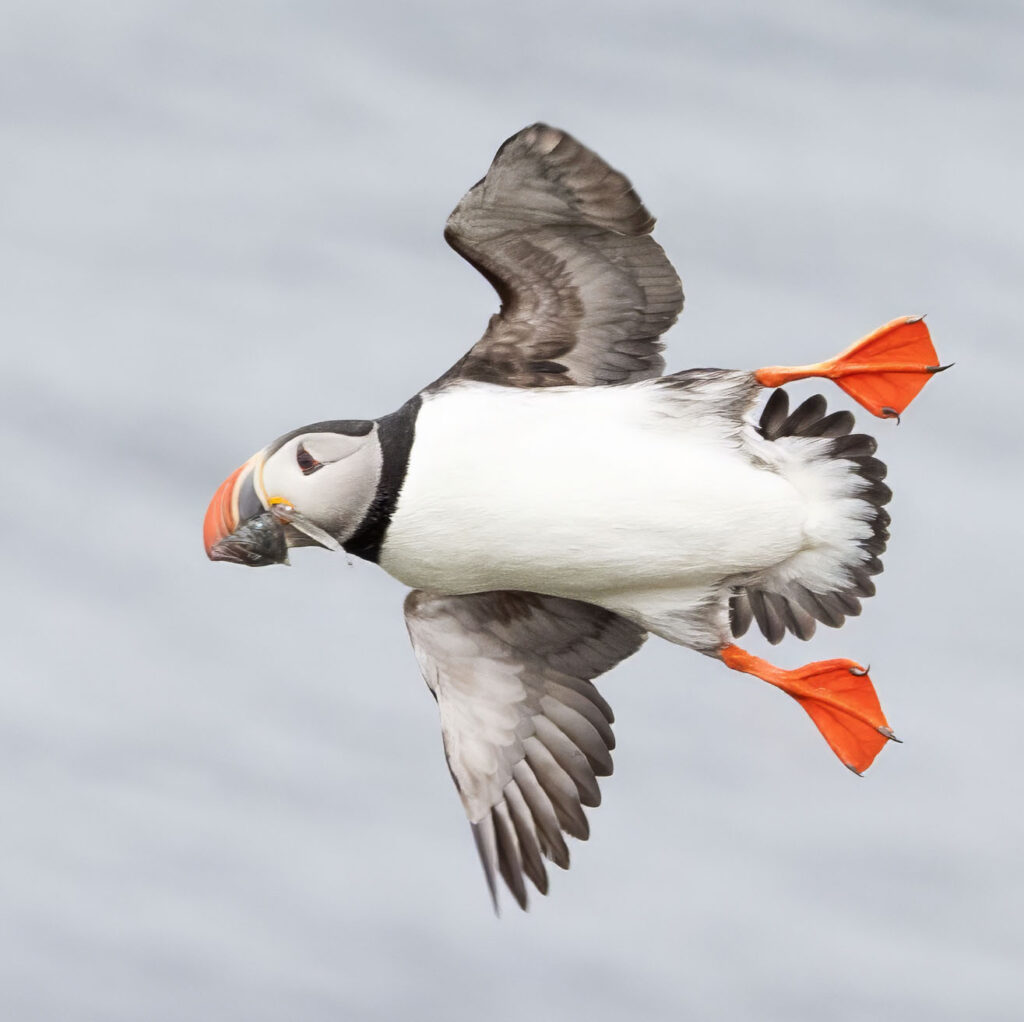
The second misgiving involves one common item in the restoration toolkit: “lethal control,” the killing of some creatures (like gulls) to protect others (like puffins). Here, discomfort about human interventions sometimes boils into fury.
In October 2001, a fifty-one-year-old animal rights activist named Rob Puddicombe landed an inflatable dinghy on Anacapa Island off the coast of Southern California. He and a companion were carrying backpacks stuffed with vitamin-K-laced cat kibble, which they proceeded to scatter on the island in hope that it would be eaten by black rats, an invasive species that had arrived in the mid-nineteenth century. Their aim was not to kill the rats, but to rescue them.
The National Park Service, which managed Anacapa as part of the Channel Islands National Park, was planning to eradicate the rats with brodifacoum, a poison that results in a slow death from internal hemorrhaging. The Park Service’s aim was to protect the Xantus’s murrelet, a rare species of auk that was subsequently split by taxonomists into two even rarer species. Rats crawled into the murrelet nests and devoured their eggs and chicks. Vitamin K is an antidote to brodifacoum. The intruders were apprehended by a ranger when their dinghy broke down and busted for feeding wildlife and “interfering with a federal function.”
As the founder of the Channel Islands Animal Protection Association, Puddicombe had sued the Park Service unsuccessfully in an effort to block the eradication program. His arrest made national news. “It’s a topsy-turvy world when poisoning wildlife from helicopters is a good thing and feeding wildlife is a crime,” he told the Los Angeles Times. “This is like ethnic cleansing; it’s a jihad against non-native species.”
The Park Service describes the Channel Islands as “the Galápagos of North America.” This may be something of an exaggeration, but it speaks to the unique suite of species that live there. The islands are “a haven for creatures that appear nowhere else,” explained Kate Faulkner of the Park Service. “There are lots of places for rats, and not many for murrelets.” Ultimately the rats were eradicated as planned, and populations of murrelets and other seabirds rebounded. A Park Service press release announced ten years later that “balance” had been restored to the island ecosystem.
In the Channel Islands, unlike the Galápagos, humans have quite a long history. Human bone fragments found there in 1959 date from thirteen thousand years ago, making it possibly one of the earliest sites of human settlement in North America. The native Chumash people burned grasslands to foster the growth of edible plants, altering the island ecosystem in the process. What European newcomers saw in the nineteenth century as the “balance of nature” was, in reality, an environment that had been shaped by human presence for millennia. The irony was not lost on Puddicombe. “Who are humans to call another species invasive, huh?” he asked a reporter. “That is a joke.”
The Park Service turned next to the eradication of feral pigs on neighboring Santa Cruz Island. The rationale was that the pigs attracted golden eagles that preyed on an endemic dwarf fox whose numbers had fallen to fewer than one hundred individuals. Puddicombe and his comrades again fought back. “The same arrogant assumption of superior mentality that brought us Three Mile Island, Vietnam, Wounded Knee and Waco is alive and well at Channel Islands National Park,” he declared. Animal rights activists charged that endangered species protection was merely being used as a smokescreen by the Park Service, whose real aim was to turn the islands into a make-believe wilderness for tourists.
Both sides saw themselves as the true defenders of nature. The clash revolved around the ethical question of whether the well-being of species should trump the well-being of individual animals. But both shared the basic premise that people—meaning, as always, people other than themselves—are the problem. This commonality comes through vividly in T. C. Boyle’s novel based on the dispute, When the Killing’s Done, in which the Park Service head and the stand-in for Puddicombe hold equally dim views of the hoi polloi.
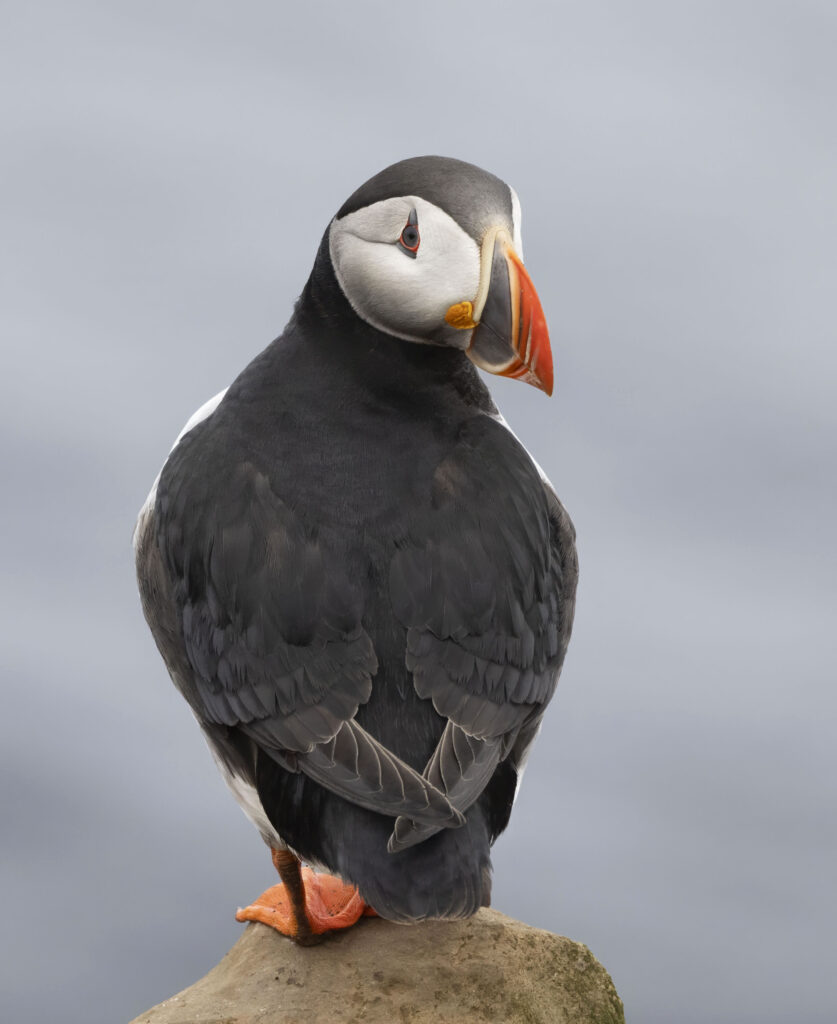
Not everyone agrees with the premise of human villainy. Anti-environmentalists, a loose confederation that attracts libertarians, oilmen, ranchers, and land developers, typically look upon species protectors and animal rights activists with equal scorn. In a keynote address to the Fifteenth Vertebrate Pest Conference, held in Newport Beach, California, in 1992, writer Robert Bidinotto decried what he called “the most dangerous pest” of all: Homo environmentalus. Nature is “a bountiful palette and an endless canvas,” he told his audience of lethal control professionals, “an empty frame, in which we and our works are the picture.” Controlling pests is one of those works. Homo environmentalus runs in “destructive packs, known as environmental groups,” driven by “fanatical hostility and an insatiable taste for power,” with the uniquely perverse and disturbing trait that it “singles out and feeds upon the most healthy and productive members of its own genus, Homo sapiens.”
The conference at which Bidinotto spoke was not a fringe event: it is an annual gathering sponsored by the U.S. Fish and Wildlife Service and California Department of Fish and Wildlife. As an example of the apex enemy, Bidinotto singled out a National Park Service biologist named David Graber, quoting his statement that he was waiting “for the right virus to come along” to cull human numbers. Graber, who passed away last year, went on to serve on the endangered species recovery team for the Channel Island fox.
Until the twentieth century, the idea that nature was ours for the taking was accepted by most Americans, or at least those of European descent. Taming the wilderness was regarded as an act of civic virtue. The Homestead Act of 1862 granted ownership titles to farmers who “improved” the land by bringing it under the plow. Until the 1950s, the state of Alaska offered a bounty on bald eagles, seen as a menace to the salmon harvest, paying fifty cents per pair of talons.
The old-guard view of nature has the advantage of internal coherence as well as historical precedence. Its ethical compass is simple: people are free to follow their self-interest wherever it leads. In comparison, the conservationist alternative is inchoate, for there is no agreement as to what new ethic should replace the old one. Lured by puffins, Steve Kress and his interns ventured into this fraught terrain.
“You never come into wildlife conservation because you want to kill things,” says Juliet Lamb, a Nature Conservancy ecologist working in New York State. Lamb interned at Project Puffin for four summers after she graduated from Harvard in 2006. In college she wrote a senior thesis critical of lethal control of coyotes on Cape Cod, where she grew up, arguing that it was useless, since new ones simply would move in to replace the ones that were killed. Instead, she maintained, people should learn to coexist with the wild canines.
On Eastern Egg Rock, Lamb found it hard to watch when the Fish and Wildlife Service arrived to shoot gulls that were crowding out the terns. But, by the end of her first summer, she shot a few, too. “When you’re out there,” she explains, “and you see the devastation that one gull can do, a gull that could eat something else but instead chooses to eat tern chick after tern chick, it gets a lot easier.”
The central aim of conservation and casus belli for lethal control is often taken to be restoration of a historic baseline, an equilibrium thought to have prevailed before the ecosystem was disturbed by humans or other invasive species. The Leopold Report, a 1963 paper on national park management prepared for U.S. Interior Secretary Stewart Udall, defined the goal as “the condition that prevailed when the area was first visited by the white man.” Others have proposed turning back the clock further. In 2004 a group of thirteen scientists and conservationists met at Ted Turner’s New Mexico ranch and endorsed “Pleistocene rewilding,” a proposal to restore the conditions that existed before humans showed up in North America more than ten thousand years ago.
Apart from the arbitrariness inherent in picking a baseline, this sort of strategy runs up against the inconvenient truth that ecosystems constantly change. Efforts to freeze the biological landscape are doomed, not only because it’s hard to convince many people to rally around this goal, but also because it’s impossible to get nature to cooperate. In recent years, professional ecologists have largely abandoned the idea, but it still has a grip on the public imagination and in the minds of many policymakers.
Lamb speculates that our attachment to baselines stems in part from a tension between scientific and human conceptions of the environment. “People like the landscapes they know; they don’t want to see things changing dramatically,” she says. “I feel it myself. As a scientist, I see things in a dynamic way. But still, I want to know that my house is not going to get flooded, that the trees in my yard are not going to fall over—all these basic things you want to stay static.”
The comforting thought that stability is nature’s default setting has also been anchored in the fact that ecological changes usually happen too slowly for us to perceive them in our day-to-day lives. As the British writer Adam Nicolson puts it in The Seabird’s Cry, a lament for declining seabird populations worldwide, “My baseline of normal has followed behind me like a dog, wagging its tail, assuring me everything is all right.” But as the impacts of climate change become more apparent, the dog is dying.
If the “balance of nature” is a chimera, and change is really the norm, what should replace baselines as our goal in conservation? Who is to say what is “right”? Who is to say that rats or gulls are less deserving of life than the species they displace? Once we jettison the security blanket of baselines, how do we behave as adults?
Scientists use a variety of criteria for assessing ecosystem health, but none is perfect. Biodiversity is a popular candidate, but some species are more unique genetically than others, and some play a more central role in their ecosystems. Primary productivity, the rate at which plants convert solar energy into organic matter, is another common indicator, but this measure assigns little value to deserts or the polar ice caps; its implicit ideal would be a world covered by tropical rainforests.
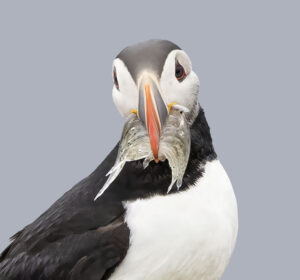
In the end, there may be no objective measure to tell us what environmental conditions are better or worse. It comes down to a question of values rather than science. Some conservation biologists are coming around to this more subjective view, and with it the compulsion to engage with the messy world of human wants and needs. “One of the most exciting ideas in restoration,” says Holly Jones, “is asking what we want for a place in the future. What do we want this ecosystem to provide, both for the biodiversity that it might support and for the human communities that are part of it?” Figuring this out requires sitting down with these communities to reach decisions. “I’m into the world of embracing that complexity, and getting into the weeds, and figuring out what folks want.”
This is a striking departure from past conservation strategies that expelled local people from protected areas. “Honestly, the old way was easier, because we didn’t have to consult with anyone,” Jones admits. “But it was also incredibly damaging to the movement, because we couldn’t get the people on our side. And no one wants to fight people, except for a small segment who would rather just hang out with animals.”
It also means a more active human role than simply letting nature take its course. In a sense, it is like the practice of medicine. Most people do not hesitate to intervene when it comes to the ecosystems inside our own bodies. As Ed Yong recounts in his eye-popping book I Contain Multitudes, the microbial cells in the human body outnumber human cells and have five hundred times as many genes. We routinely use antibiotics—the microbial version of lethal control—to combat infectious diseases, and as we learn more about the vital role of good bacteria, many people have started taking probiotics, too. To safeguard public health, we also kill mosquitos and eliminate stagnant pools of water to prevent malaria and other vector-borne diseases.
Just as microbes live in us, we live in the wider world. It is not a great leap to think of the environment that supports us, as well as the microbiomes within us, as extensions of ourselves. As Douglas Allchin, a philosopher of science at the University of Minnesota, puts it, we can “think like a biosphere.” We can strive to safeguard the health of our planet.
Rather than elevating nature over humans, this way of thinking puts human well-being at the core of environmental ethics. But neither does it elevate humans over nature. It departs from the pre-conservation ethic in that it is more firmly grounded in science and at the same time tempered by humility. We now know far more than our ancestors did about the tangled web of life on Earth. We also know more about what we don’t know. We recognize that our scientific knowledge is limited and fallible. The new conservation ethic demands neither more intervention in nature nor less: it demands wiser interventions.
Spring came early to the Gulf of Maine in 2012. In the beginning of March, a month earlier than usual, nutrient-rich snowmelt poured from coastal waterways and the phytoplankton at the base of the marine food chain were in full bloom. The zooplankton that feed on them bloomed in turn, as did the fish and crustaceans that eat both. Lobsters molted in April, a full two months ahead of normal.
No one told the puffins. Following their inner timetable, they began returning to Eastern Egg Rock in the first week of April. Their first chicks hatched as usual in early June. By then, many of the fish on which parents normally fed their nestlings were gone, having shifted north or moved into deeper waters in response to the warmer sea. Butterfish, a species whose numbers have increased in Maine’s waters, were plentiful, but they have a roundish shape, and many of them had already grown too big for the nestlings to swallow. The puffineers found uneaten butterfish in burrows alongside the bodies of chicks that starved. Only one-third of the pufflings survived to fledging age.
In the nineteenth century, hunting had removed puffins from their habitat in Maine. Now climate change threatens to take the habitat from the puffins. Even worse breeding failures are being reported elsewhere. In the Westman Islands of southern Iceland, home of the world’s largest Atlantic puffin colonies, declines in forage fish due to warming waters have led to a population collapse. In general, birds can adapt more easily to climate change than, say, trees, for the simple reason that they are mobile. But philopatric species like puffins, that faithfully return each year to breed in the place of their birth, are more like trees. One impact of climate change could be that the years of hard work it took to bring puffins back to Maine ultimately turn out to be for naught.
The Gulf of Maine is among the fastest-warming places in the global ocean, due to changing currents and the topography of the ocean floor: it is a shallow depression where warm waters from the Gulf Stream are displacing colder waters from the Labrador Current. As water temperatures change, so do fish populations. For puffins and other seabirds, the big question is whether the fish they ate in the past will be replaced by new species that are equally accessible and palatable. No one knows the answer, but at Eastern Egg Rock in recent years there have been glimmers of hope, as populations of juvenile haddock and redfish (also called ocean perch) have grown, thanks in part to better fishery management.
The ranges of many bird species across the world are shifting toward the poles, as are the isotherms on weather maps. In Massachusetts, where I live, models predict that our state bird, the black-capped chickadee, will disappear by the end of this century and be replaced by its southern relative, the Carolina chickadee. Birds move mainly in response to food availability, however, which can complicate the picture; the ranges of some North American bird species, including the redheaded woodpecker and the western meadowlark, appear to be shifting southward.
As an intern, Juliet Lamb recalls that she thought in terms of “our obligation to reverse some of the damage we’ve done, by bringing back species we caused to disappear.” Today she has a different take on Project Puffin and its role: “Its value is not so much historical, but having more diverse and more functional ecosystems. We’re looking at a future that’s very uncertain, and starting out with as many native species as possible is a good insurance policy. It may turn out that puffins lose habitat farther north because of climate change, and the Maine population that’s now on the edge of the range could become the core in the future.” Faced with unknowns, there is a case for keeping as many eggs in as many baskets as we can.
Climate change may be humankind’s most profound lesson in the need for humility in our dealings with nature. But humility does not necessarily mean passivity, and sometimes it may mean active engagement on behalf of other species. A team of scientists commissioned by the National Park Service recently reported on the potential risks and benefits of “assisted migration,” efforts to help move species threatened by climate change to new locations. It is a controversial idea. But as climate change gathers force, it is no longer possible to regard a hands-off approach as nonintervention in the lives of other species. We have already intervened, big-time.
Efforts like Project Puffin have helped in the recovery not only of a species, but also of an idea: the possibility that humans can, if we choose to do so, be a force for good in the natural world. This means striking a different sort of balance of nature, a balance between the opposing notions of humans as God and humans as a cancer, neither of which offers a viable starting point for coexistence in the web of life.
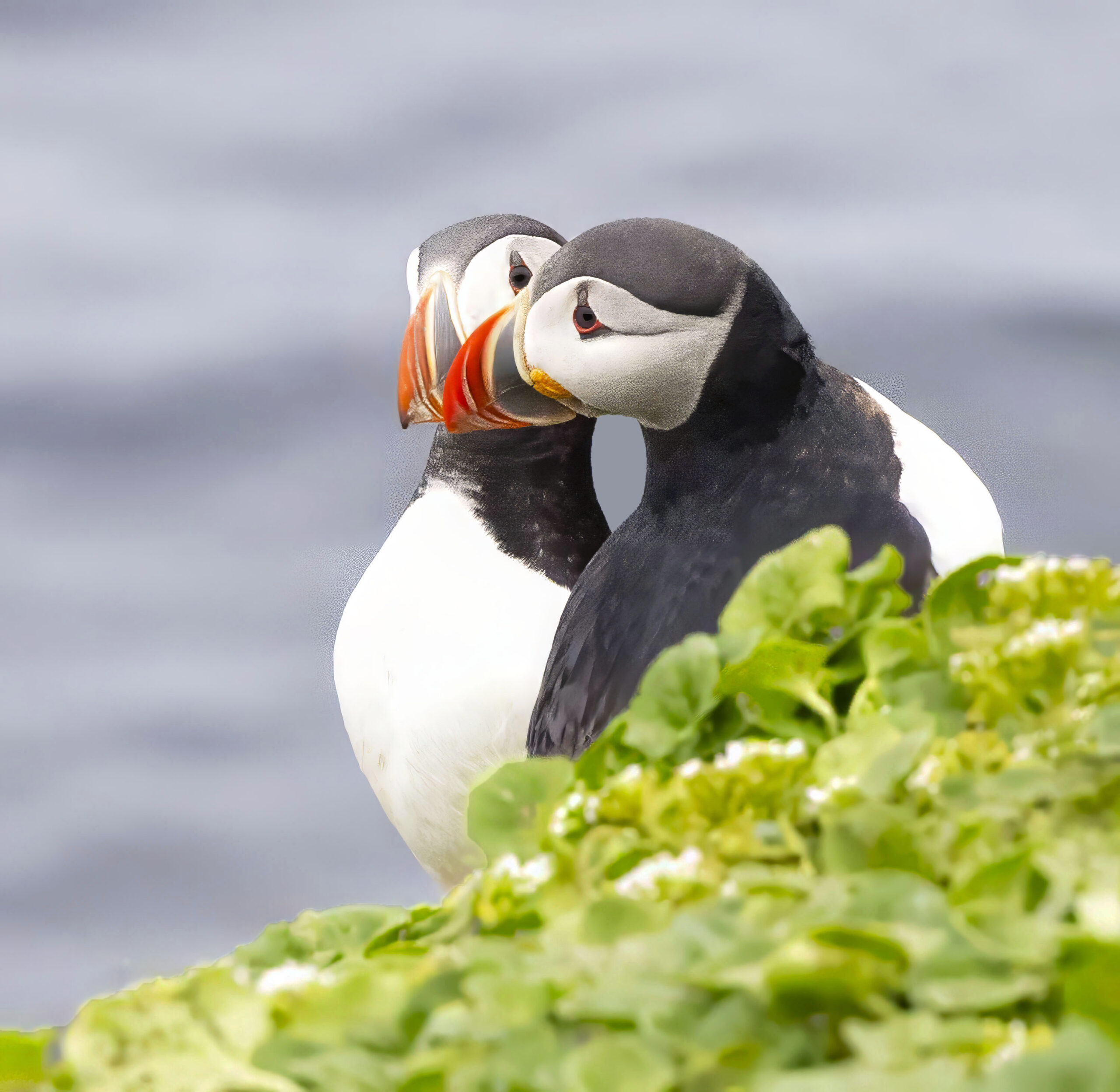
In some cases, acting for other species may entail an ongoing engagement. Conservation-reliant species will need conservation-reliable humans. The task brings to mind an old rabbinic precept: “You are not obliged to complete the work, but neither are you free to desist from it.” The open-endedness goes deeper than conservation reliance. It also means accepting that our idea of the ends—of what constitute good impacts on nature and bad ones—is and will remain a work in progress. It would take another kind of hubris to imagine that we have figured this out once and for all.
James K. Boyce is a naturalist and economist. His work has appeared in Harper’s, Scientific American, The New York Times, the Los Angeles Times, Politico, and numerous scholarly journals.
Tianne Strombeck creates portraits of nature to promote conservation and wildlife education. She works to understand her subjects and capture their essence. Her work has appeared in numerous books, including Sy Montgomery’s Condor Comeback, which focuses on the condor restoral effort at Hopper Mountain. More of her photos can be seen at Tianimal.com.



